Allegiance France Switzerland Awards Legion of Honour Name Guillaume-Henri Dufour | Role Engineer Books Strategy and tactics Education Ecole Polytechnique | |
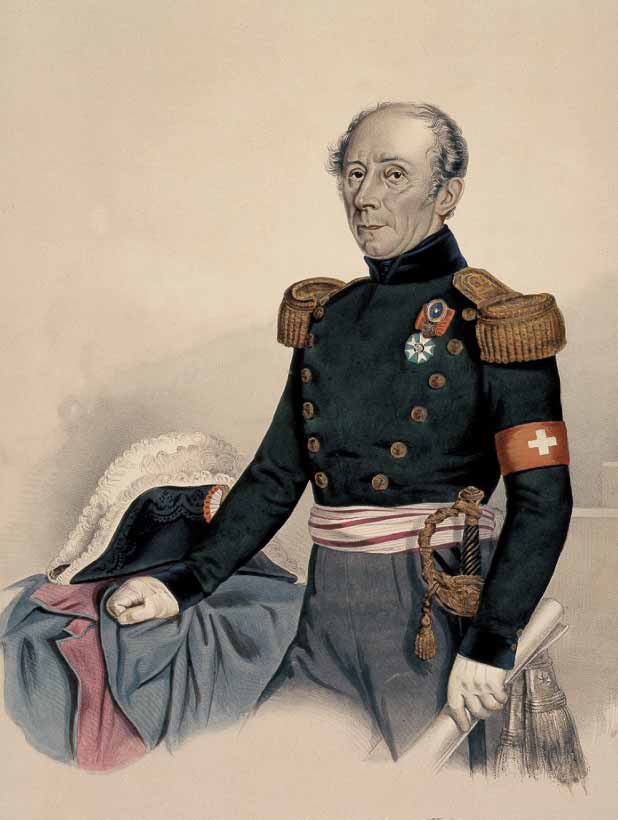 | ||
Years of service 1810–1817 (France)1817–1875 (Switzerland) Commands held Swiss Federal Office of TopographyMilitary of Switzerland Battles/wars Defence of CorfuSonderbund War Other work Professor of mathematics, cartographer, founding committee of the International Red Cross Battles and wars Septinsular Republic, Sonderbund War | ||
Service/branch Military engineering | ||
Gli svizzeri guillaume henri dufour
Guillaume Henri Dufour (15 September 1787 – 14 July 1875) was a Swiss army officer, bridge engineer and topographer. He served under Napoleon I and held the office of General four times in career, with the first being in 1847 when he led the Swiss forces to victory against the Sonderbund. Dufour presided over the First Geneva Convention which established the International Red Cross. He was founder and president of the Swiss Federal Office of Topography from 1838 to 1865.
Contents
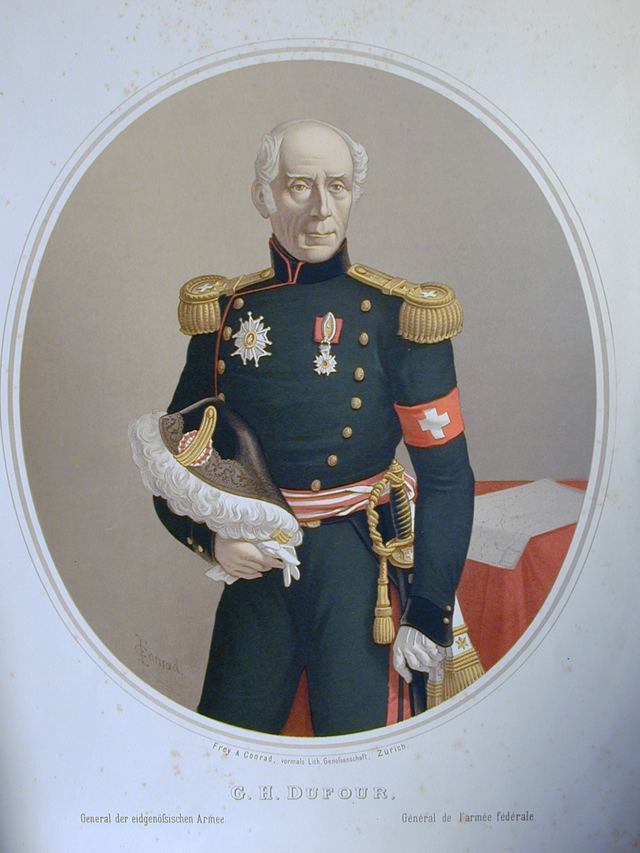
The Dufourspitze (the highest mountain in Switzerland) in the Monte Rosa Massif is named after Dufour.
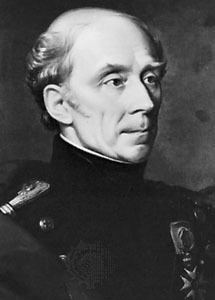
Career
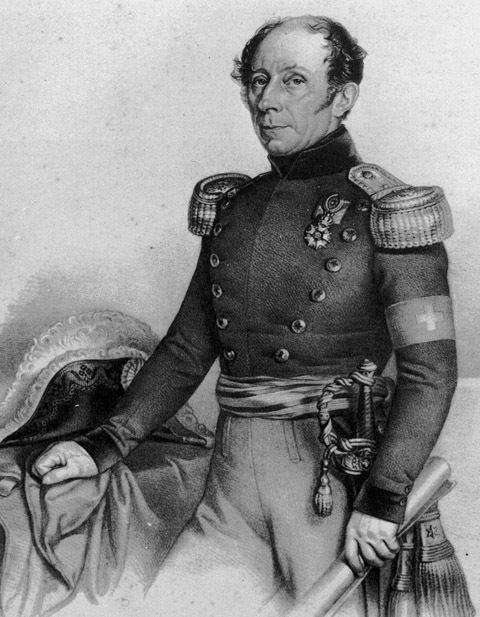
Dufour was born in Konstanz, where his parents were temporarily exiled from Geneva. His father Bénédict was a Genevan watchmaker and farmer, who sent his son to school in Geneva, where he studied drawing and medicine. In 1807, Dufour travelled to Paris to join the École Polytechnique, then a military academy. He studied descriptive geometry under Jean Nicolas Pierre Hachette, and graduated fifth in his class in 1809, going on to study military engineering at the École d'Application. In 1810, he was sent to help defend Corfu against the British, and spent his time mapping the island's old fortifications.

By 1814, he had returned to France, and was awarded the Croix de la Légion d'Honneur for his work repairing fortifications at Lyons. In 1817, he returned to Geneva to become commander of the Canton of Geneva's military engineers, as well as a professor of mathematics at the University of Geneva. His duties included preparing a map of the Canton.
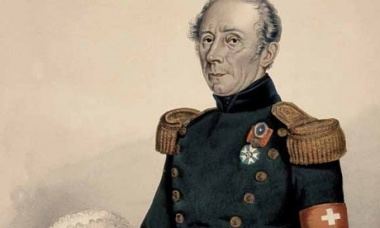
Dufour remained a General in the army. Among the officers serving under him was Louis-Napoleon Bonaparte, nephew of the former Emperor.
In 1847 the Catholic cantons of Switzerland attempted to form a separate alliance of their own, known as the Sonderbund, effectively splitting from the rest of the country. The Tagsatzung appointed Dufour General on 21 October 1847, and he led the federal army of 100,000 and defeated the Sonderbund under Johann-Ulrich von Salis-Soglio in a campaign that lasted only from November 3 to November 29, and claimed fewer than a hundred victims. He ordered his troops to spare the injured.
In addition to serving in the position of General in 1847 due to the Sonderbund War, the Federal Assembly appointed him to the same position in August 1849 due to the Baden Revolution, on 27 December 1856 due to the Neuchâtel Crisis, and in 1859 due to the Second Italian War of Independence.
In 1850 the mountaineer and topographer Johann Coaz served as his private secretary.
In 1863 he was part of a committee which, under Henry Dunant led to the foundation of the International Red Cross.
On 16 July 1875, 60,000 persons participated at Dufour's burial at Cimetière de Plainpalais in Geneva.
Saint Antoine Bridge
Dufour acted as state engineer from 1817, although he was not officially appointed as such until 1828. His work included rebuilding a pumping station, quays and bridges, and he arranged the first steam boat on Lake Geneva as well as the introduction of gas streetlights.
The scientist Marc-Auguste Pictet had visited Marc Seguin's temporary wire-cable simple suspension bridge at Annonay in 1822, the first wire-cable bridge in the world, and published details in Switzerland. He joined with others to promote a new bridge across the Genevan fortifications, consulting with Seguin on how it might be built, receiving back a series of sketches. Dufour developed the design in late 1822, proposing a two-span suspension bridge using wire cables - this would become the first permanent wire cable suspension bridge in the world. The design used three cables on each side of an iron and timber bridge deck. The cables stretched 131 feet between the towers, although the largest span was only 109 feet.
Memorials
Memorials are at:
His home from 1845-1875 at Rue de Contamines, Geneva, is preserved by a foundation.
Numerous cities and towns in Switzerland have streets named for him: rue du Général-Dufour in Geneva, La Chaux-de-Fonds; via Gen. Henri Dufour in Chiasso; rue du Général- Dufour/General-Dufour-Strasse in Biel/Bienne; Dufourstrasse in Aarau, Basel, Bern, Biberist, Lenzburg, Luzern, Rorschach, St. Gallen, Thun, Weinfelden, Wettingen, Wil, Zollikon, Zürich; via Dufour in Lugano. There is also Dufourplatz in Zollikon.
The general was depicted on the 20 francs note of the 1956 series of Swiss banknotes (in circulation 1956-1980).
